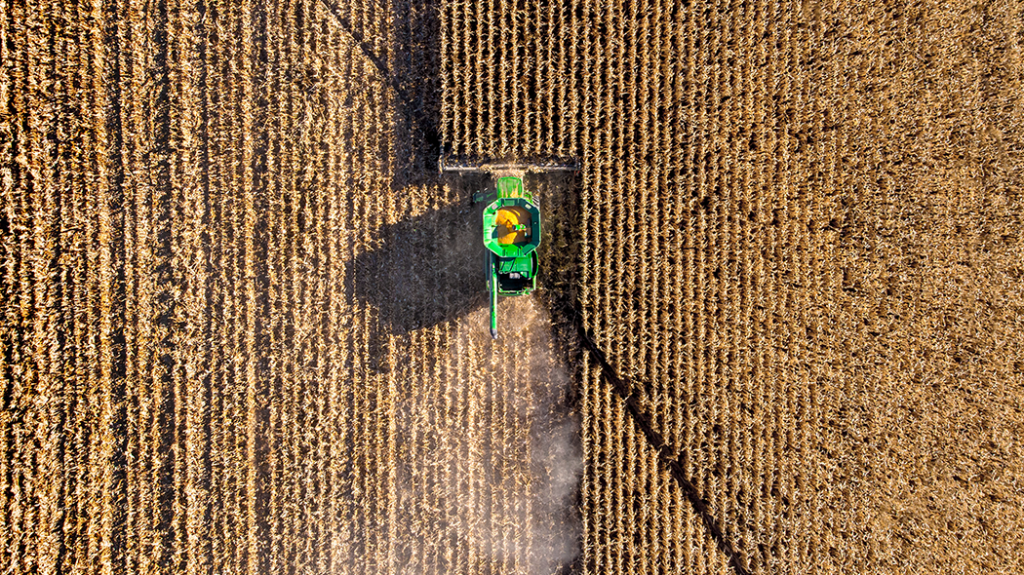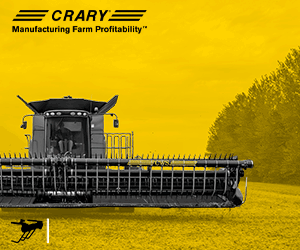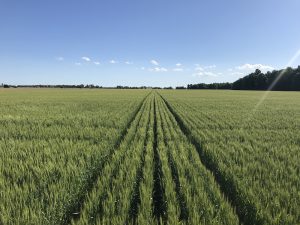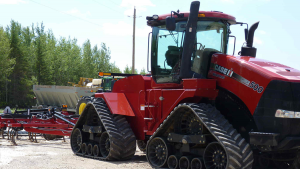Writing Canada’s sustainability story
CANADA’S SUSTAINABILITY SCORECARD

THE 2021 FOOD Sustainability Index, developed by Economist Impact with the support of the Barilla Center for Food and Nutrition Foundation (BCFN), ranked Canada third globally in terms of sustainable food production. While the score itself is honourable, Canada did rank rather poorly under one of the three evaluated pillars: sustainable agriculture. As a net exporter of agricultural goods, maintaining Canada’s international reputation as a supplier of sustainable goods is critical, especially at a time when importers are banning products from countries linked with mass deforestation and other unsustainable practices. However, sustainability should be calculated using metrics that make sense on a national and provincial level in order to avoid the potential pitfalls that come with using a one-size-fits-all formula. More importantly, Canada’s agricultural sector should be the author of its own sustainability story.
THE FOOD SUSTAINABILITY INDEX AND ITS METRICS
The Food Sustainability Index examines how food systems are performing across three pillars — food loss and waste, sustainable agriculture, and nutritional challenges — using 95 individual metrics. The index covers more than 92 per cent of global GDP and 92 per cent of the global population.
Globally, Canada ranked number one for food loss and waste, and received a top mark for the ways in which it addresses nutritional challenges. Where it fell short was under the sustainable agriculture pillar, ranking 36 out of 78 countries. For comparison’s sake, the United States ranked 75th overall.
To understand how Canada received such a low mark for sustainable agriculture it’s important to know the metrics under which it was evaluated. In its recently published methodology paper, the developers of the index listed the following metrics under the sustainable agriculture pillar:
- Percentage of cultivated land equipped for irrigation;
- Pesticide use;
- Synthetic fertilizer use;
- Livestock density;
- Food system reliance on imports;
- Environmental biodiversity and protection of natural habitats; and
- Distribution of agricultural holders by sex (per cent female)
Despite attempts to reach the communications team at BCFN, country-specific report cards could not be obtained. One can only assume that Canada lost points for its use of pesticides and synthetic fertilizers, and possibly for the density of its livestock systems, but it’s impossible to know for certain.
SUSTAINABILITY INITIATIVES IN ONTARIO
Mike Buttenham, environment and sustainability lead at Grain Farmers of Ontario, says he’s pleased with the overall ranking.
“To be in the top three worldwide, I think it’s a pretty positive story,” he says.
He was, however, surprised by the score Canada received for sustainable agriculture. “I guess a lot depends on how they examined the data,” he says. “I think there’s always areas that we can improve.”
Buttenham says Grain Farmers of Ontario is actively involved in initiatives that aim to improve overall sustainability by evaluating land stewardship practices. Marty Vermey, Grain Farmers of Ontario senior agronomist, says Ontario grain farmers are working towards more sustainable production through the adoption of no-till practices and cover crops. He did admit, however, that there’s no standardised way to calculate results.
“But as far as sustainability, I think one of the hardest things is that everybody wants it measured,” he says. “Everybody wants a number.”
Across the country, working groups have established a number of initiatives with the aim to improve long-term sustainability of agricultural production. As an example, Vermey pointed to the 4R principles, a concept that incorporates the right fertilizer source at the right rate at the right time in the right place. Developed by Fertilizer Canada in an effort to establish sustainability indicators and environmental impact data, the initiative provides support to growers and focuses on measuring and documenting the economic, social and environmental impacts of 4R nutrient stewardship. Growers can take a free course online to freshen up on fertilizer practices as well.
At home in Ontario, Vermey says more growers are using nitrogen stabilisers to reduce losses through leaching, denitrification and volatilization.
Researchers continue to dig deeper into pressing issues such as phosphorus and nitrous oxide management. University of Guelph researcher Paul Voroney, for example, is looking at phosphorus-use efficiency in crop production. One of the end goals of his project is to determine the appropriate soil P test for local calcareous soils treated with various organic amendments compared to that with inorganic P fertilizers. The aim is not only to maintain grain yield, but also to minimize the risk of runoff.
Lake Erie watershed research by University of Waterloo scientist Merrin Macrae is working to determine the best options for optimum phosphorus management. Her results have shown that best management practices are heavily dependent on geography.
Grain Farmers of Ontario is involved in another initiative, the Great Lakes Yield Enhancement Network (YEN), which helps winter wheat growers improve returns by unlocking the potential of their fields in terms of actual yield. YEN not only helps participating growers achieve higher yields, but more efficiency.
“It’s not about pouring fertilizer,” says Vermey. “It’s about making the changes in management that help you incrementally increase your yield by judging yourself on the benchmark from the entire group study for that year.”
SHIFTING FOCUS FROM PRACTICE-BASED INDICATORS TO OUTCOMES-BASED INDICATORS
Another initiative, Field to Market Canada (FMC), is working to streamline sustainability assessment across North American commodity crop production. Motivated by producer groups such as Cereals Canada and Grain Farmers of Ontario, FMC started out by developing the Canadian Field Print Calculator, a tool that allows individual growers to document production practices for evaluation. Users receive a field-by-field performance report on indicators such as land use efficiency, soil erosion risk, energy use, climate impact and soil carbon release.
FMC has since expanded its reach and now works closely with organizations within the value chain to deliver sustainable outcomes for Canadian and U.S. agriculture through the use of consistent, proven and outcomes-based data. The idea is to drive continuous improvement in the production of crops, including corn, soybeans and wheat.
“Their producers were growing sustainable crops, they were adopting sustainable farming practices, and they really wanted some sort of a tool to showcase that,” explains Harvey Bradford, an agricultural consultant with Serecon, who works on the initiative.
There are approximately 200 Ontario growers involved in three sizeable projects that collect data on behalf of FMC retailer and brand members and their project partners, typically grain companies. Each project has its own slightly different sustainability objective.
“Some of them are trying to motivate their grower networks to establish different sustainability farming practices,” he says. “With the reports farmers get back, typically each member who’s running a project will host an annual grower school where they get the growers together to talk about sustainability.”
Although Bradford is not at liberty to divulge specific details, he did say they are all based in southern Ontario and all focus on winter wheat. Perhaps more importantly, though, they focus on outcomes-based indicators rather than practice-based indicators, like the Food Sustainability Index.
“The problem with sustainability is it’s a very subjective term,” says Bradford, adding that it’s important to develop regionally specific metrics.
“Because what might make sense in the Midwest of the United States doesn’t make sense in southern Ontario or doesn’t make sense in eastern Manitoba,” he says.
And while the initiatives do have a place in motivating sustainable change globally, Field to Market Canada’s focus is on regionally specific sustainability programs.
“I think it’s really valuable going forward,” says Bradford. “It can motivate a lot of a lot of positive change.”
Daniel Ramage, director of Market Access and Trade Policy at Cereals Canada, agrees that it’s important to use regionally specific metrics when assessing sustainability. He points to other Canadian-specific initiatives that are working towards more sustainable agriculture production, including the Canadian Roundtable for Sustainable Crops and Canada’s National Index on Agri-Food Performance, both of which use regionally specific metrics when determining sustainable production. And while BCFN and the Economist Intelligence Unit gave Canada a great score overall, Ramage believes they haven’t captured the whole story.
“In Canada, we farm using modern agricultural practices, and that can include tools like crop protection products. Often, that’s part of our sustainability story because it enables things like no-till, which is really important for soil health,” he says. “And yet that’s not always taken into consideration in some of these in indexes.”
“That’s where we see it’s really important for Canadian agriculture to tell our own story, and to develop the tools that will help us to tell our own story,” he concludes. •












